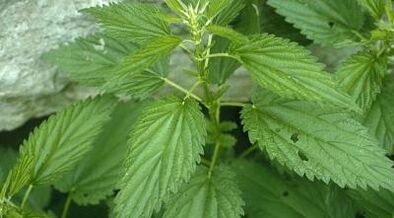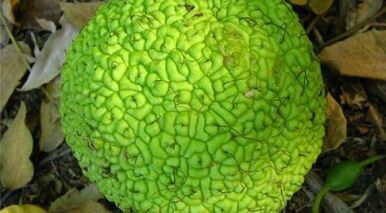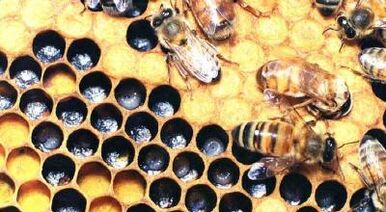
The legs are most susceptible to varicose veins.The part of the body furthest from the heart needs rest to support tired and weakened blood vessels.We "utilized" our calves until we saw an enlarging superficial network of swelling, painful, gnarled lumps, and lost sleep over the pain.
Treating varicose veins with folk remedies is not a substitute for medicine.Because the main drugs are based on plant materials.Treating diseases requires the use of accumulated experience in traditional medicine.
required properties
All methods used must eliminate or prevent the cause of varicose veins:
- Improve the density and elasticity of vein walls;
- Restore sagging valves;
- Because blood fluidity increases blood flow in the blood vessels of the legs and reduces their coagulability;
- Prevents the formation of blood clots and thrombophlebitis;
- Has anti-inflammatory effects;
- For relief of local edema, diuresis is useful.
For use at home, you will need to choose the following medicines:
- Easy to prepare and use yourself;
- No toxic effects;
- Store in refrigerator;
- It can be grown on a windowsill or in a country house, bought on the market;
- Relatively cheap.
Treatment
All traditional methods of treating varicose veins are divided into systemic and topical.
Common ones include certain diets, baths, infusions and decoction intake.Many herbs can be taken both internally and externally.
Topical application is based on using lotion and applying it to the most painful areas.You need to learn how to prepare ointments.
Doctors recommend a course of treatment of one month or longer.Rest periods should not exceed one week and replace one product with another.
Varicose veins diet
Experienced doctors do not recommend starting treatment for varicose veins in the legs without fasting.Follow-up visits are necessary for 5-7 days regardless of whether you are overweight or not.
The essence of the diet is: the exclusion of white bread, pastries, sweets, sweets, hot sauces, alcohol, coffee, meat and fish dishes.No limit on liquids.It is necessary to eat only vegetarian food: as much fruit and fresh juices as possible.Cranberries, blueberries, sea buckthorn and figs are considered particularly valuable.After two days, rice porridge, buckwheat, salad with fresh vegetables and vegetable oil, and nettle soup are added.
It is recommended to do this diet for 2-3 days per month.People with large leg veins are advised to completely avoid starchy foods (breads and baked goods made of high-quality flour, boiled potatoes).You can boil potatoes with the skin on and add bran to the food.
General treatment procedures
They have an effect on the entire body, normalizing blood circulation.
bathing place

Varicose veins can be treated by bathing.They are contraindicated in cases of thrombophlebitis and trophic ulcers.
The contents of the bath are prepared in advance: half a kilogram of oak, willow and chestnut branches are boiled for an average of half an hour (it is best to cook them in an enameled bucket).Then add 4 packets of herbs to the solution (chamomile, thread, St. John's wort) and steam overnight.In the morning cook rye bread (3 loaves) separately, strain and pour into the bath.
Do it for about 40 minutes before going to bed, and keep the water temperature at 38-40 degrees
If bathing with soda, dissolve a full packet of soda per bath, or 6-7 tablespoons of soda per 5 liters (for feet only).
You can prepare only willow bark (two handfuls of broken branches in a three-liter pot) and cook for half an hour.
For foot baths, two to three tablespoons of dry raw material of crushed bark is enough; cudweed grass (2 packs of 50 g each) is also recommended.
Recommended herbal combinations: hazelnut leaves, birch, chamomile flowers, clover, hops, pine branches.
After taking a bath, you need to do a light massage from bottom to top, put on elastic stockings, and raise your feet slightly.
Internal use recommendations
Folk remedies for oral administration are very creative.They offer a remedy or a combination of remedies, decoctions, water infusions, alcoholic tinctures.Decoctions are most easily prepared in a large thermos while retaining all the properties of a water bath.It must be tightened before use.
- Antonov apple infusion- Pour two or three small apples into a liter of boiling water and wrap for four hours.Then knead them well and drink half a cup of decoction with honey on an empty stomach and in the evening.
- nettle- A known treatment for varicose veins.Place 2-3 tablespoons of dried leaves in a half-liter thermos of boiling water.40 minutes of infusion is enough.You need to drink 1/3 cup one hour after meals.
- Celandine Alcohol Tincture- Available in pharmacies, it is recommended to drink 9-10 drops before meals, add a tablespoon of milk, 3 times a day.
- soda solution— Prepare before use (one teaspoon in a glass of warm water), recommended morning and evening.
- Treat with garlic and honey- Chop 250 grams of garlic, mix with 350 grams of honey, and leave for at least ten days.It is recommended to take one tablespoon half an hour before meals.
- Decoction made from oak bark, willow branches and chestnutsBoil for half an hour, then add chamomile and St. John's wort, skewer and leave for 12 hours.Drink 50 ml with honey first, then drink 150 ml two days later.

It is recommended to combine the use of herbs with baths and topical treatments.A course of treatment lasts two months.
topical treatment
Localized means that the effect is only on the pathologically inflamed area of the leg veins.
Use juice as lotion
Topical treatments in the form of compresses and lotions require prior preparation of the necessary solutions and ointments.
- apple cider vinegar- Considered a means of improving vascular tone.They rub it on painful areas of dilated veins twice a day.For internal use, add two teaspoons per 250ml of water.
- potato juice- For the treatment of ulcers.Apply the ground pulp to the ulcer and bandage it, changing the bandage after five hours.
- Cabbage leaf compress- Helps relieve skin pain and inflammation.The leaves were tied up overnight.
- hop cones- One tablespoon per cup of boiling water.Use prepared medicated lotion or drink a glass before meals.
- mugwort- Using the leaves and flowers, grind them into a paste, dilute with kefir and apply to the area of dilated veins.
- tomatoOnly those mature enough can use it.The nodes of the varicose veins are thinly sliced and covered with a bandage.After 3-4 hours, replace with new dressing.
alcohol tincture

Kalanchoe - Alcohol-based tincture used as a rub.You need to prepare the solution correctly: after cutting, leave the leaves in a cold environment for 5-7 days, then grind them in a meat grinder, add vodka (you can use the volume as a guide, the kalanchoe in the container should be 2 times smaller) and leave in the dark for another week.This product is filtered and can be used to treat varicose veins.Suitable for long-term storage.
Make an alcoholic tincture (2/3 of the plant material) from white acacia flowers and birch buds over a week to lubricate the skin over diseased veins.
From the perspective of Eastern medicine, the properties of Adam's apple have a positive effect on vascular tone.
Green walnuts - crush into small pieces and pour in olive oil.You need to stay in the sun for at least forty days.You can then lubricate the affected area.
A medicinal mixture of chamomile, St. John's wort, yarrow, calendula, oak bark and horsetail is recommended for cleaning trophic ulcers and relieving inflammation.
Horse chestnut can be used externally and internally.Use plant leaves and flowers.For compresses, brew with water like tea.Prepare alcohol tinctures for internal use.Store in a dark place for at least two weeks.Drink 30 drops before meals.
Adam's apple is the fruit of a rare apple tree that grows in southern regions.It should not be taken internally as the juice is poisonous.Alcoholic tinctures for grinding are made from crushed fruit.It is recommended to store in a dark place for one month.
How to Make Ointment at Home
On the basis of ointments, herbs can stay on the affected area longer and penetrate better into the deeper parts of the area.For ointments, use vegetable oil, linseed decoction, lard and chicken fat.Concentrated herbal decoctions are added to the melted and heated base.Stir over low heat for five minutes.
Herbal mixtures are used with ointments; they do not need to be prepared every day: eucalyptus, dandelion root, celandine, lemon balm, lilac, clover, chamomile, calendula, fir needles.Brew all ingredients in equal amounts before mixing with the ointment base.

Such ointments should be stored in the refrigerator.Apply a thick layer to skin using light rubbing movements.Cover with compression paper and a warm bandage.It is best to apply ointment at night.
Other treatments
Bee stings contain hirudin, which thins the blood and prevents blood clots from forming.Treatment with bees requires forced puncture of the external venous knot.Initially, the patient will experience pain and burning, which will soon resolve on their own and the protruding venous knot will be removed.
possible consequences
Folk remedies for treating varicose veins are far from harmless.These are concentrated extracts of the plant that have strong side effects when taken orally.This is especially true for people with stomach and pancreatic disorders.Herbs can affect the acidity of gastric juices.Therefore, their use can lead to the exacerbation of chronic diseases of the digestive system.
It is necessary to monitor for allergy symptoms (itching, rash, swelling of the skin).If such symptoms occur, please discontinue use.
To use traditional methods, you need confidence and patience in the therapy.Few heeded the advice to walk through the grass dew at dawn wearing thin cotton socks and not taking them off until the feet were dry.This charming recipe brings out the best of nature.
